Eschatology—the question of the ‘last days’ or ‘last things’—is a central theological theme in the New Testament. It frames Jesus’ proclamation of the kingdom of God in the gospels, and in the epistles provides the grounding of our understanding of both discipleship in the present and hope for the future. In previous generations, its importance has often been marginalised, and in contemporary scholarship and popular reading, many aspects of eschatology are highly contested.
 The Tyndale New Testament Study Group is meeting to explore this from Monday 30th June to Wednesday 2nd July 2025 at The Hays Conference Centre in Derbyshire. It is close to the M1 and can be reached by train to Alfreton station.
The Tyndale New Testament Study Group is meeting to explore this from Monday 30th June to Wednesday 2nd July 2025 at The Hays Conference Centre in Derbyshire. It is close to the M1 and can be reached by train to Alfreton station.
It is an excellent site, with good accommodation and beautiful grounds, and within easy reach of the beautiful Peak District for walking. We will be meeting simultaneously with other groups, so there a chance to interact with members across the whole of the Tyndale Fellowship.
It promises to be a fascinating exploration, with an international cast of contributors—we hope you can join us! You can book online here, and there are discounted rates available until 7th February 2025.
The programme will include the following:
Discussion: Eschatology in the Thessalonian Letters
In this session we welcome Bruce Longenecker and Sydney Tooth to share their ongoing research in this area following their 20204 publications. Sydney’s monograph addresses the compatibility of the eschatology of 1 and 2 Thessalonians (Suddenness and Signs: The Eschatologies of 1 and 2 Thessalonians, Mohr Siebeck 2024) and Bruce’s articles reimagine the socio-historical context of the founding of the Thessalonian church (“The Rupture of an Association: Social Conflict and Its Management in the Thessalonian Christ Assembly.” Journal of Biblical Literature 2024; “The Wrath of the Deities and The Privileged Deceased: Narrating Death in the Associational Rupture at Thessalonica.” NTS 2024). We will have a chance to unpack, discuss and debate their work with them as part of our time together.
Other papers:
Aminta Arrington (John Brown University, Arkansas): The Last Shall Be First: Overturning Banquet Etiquette and Enacting Eschatological Reversal in Luke 14
Armin D. Baum (Freie Theologische Hochschule, Gießen, Germany): Where Do the Persistent Disagreements between German-speaking and English-speaking Biblical Scholarship Come from? A Sociological Answer Based on the History of Research on 2 Thessalonians
Benjamin E. Castaneda (Edinburgh Theological Seminary): My Brother’s Keeper: The Eschatological Ethics of 1 John’s Jubilee
Elkanah K. Cheboi (Kabarak University, Kenya): The Church from Every Tribe and Tongue: Theological and Missiological Implications of the Eschatological Hope in Revelation 7:9
Jamie Davies (Trinity College, Bristol): “Whether We Are Awake or Asleep” (1 Thess 5.10): Eschatological Alertness and the Logic of Grace
Tyler Hoagland (St Andrews, Scotland): Apostolic Eschatology in Two Acts: Spiritual Restoration and Kingdom Come
Danillo A. Santos (São Paulo, Brazil): A Consecrated Congregation: The Fulfillment of Eschatological Holiness in 1 Cor 1.2
Murray Smith (Christ College, Sydney): Jesus’s Parousia in Mark 8:38: The “Coming” of “the Son of Man” as the Final Coming of God
Suzanne Smith: (Charles Sturt University/Bible College of South Australia): Christ’s “sending” is his “coming”: Luke 21:25–27 and Acts 3:19–21
Bex White (King’s College London/University of Chester): ‘The Last Days’ in Acts 2:17, the Hebrew Bible and the Dead Sea Scrolls: End Times, Ordinary Time, or Awaited Time?
We hope you can join us!

 Buy me a Coffee
Buy me a Coffee



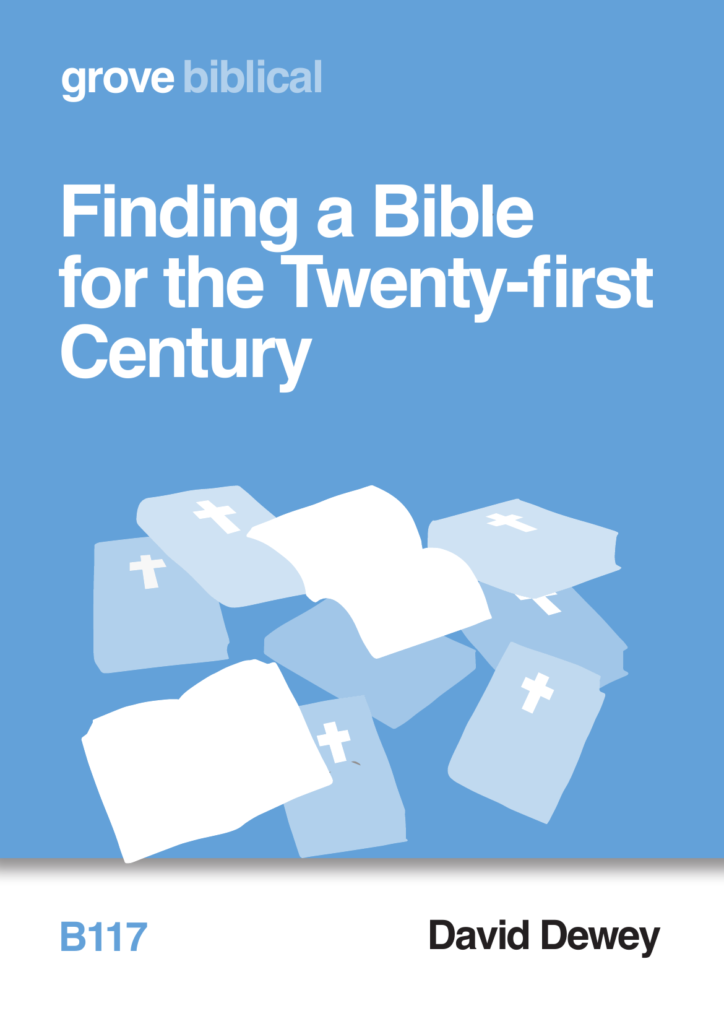








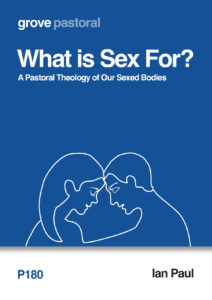

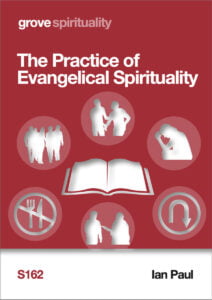
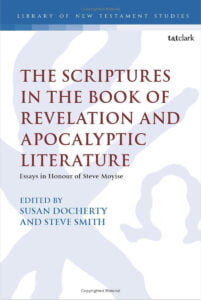

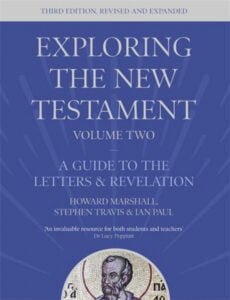

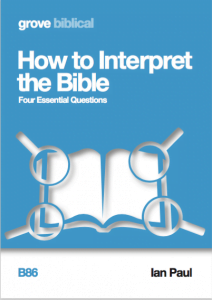
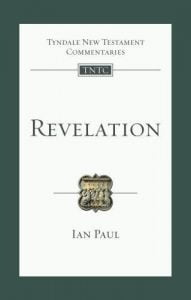
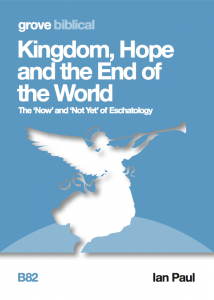





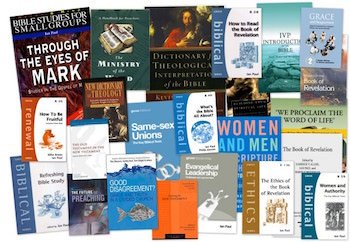
“Eschatology—the question of the ‘last days’ or ‘last things’—is a central theological theme in the New Testament. It frames Jesus’ proclamation of the kingdom of God in the gospels, and in the epistles … ”
Kingdom imagery dominates the Christian West. Meredith Kline sees that:
“The overall unity of the covenants will be provided by the concept of the Kingdom of God, of which they are so many manifestations. If a general unifying term were desired it might then be Covenant of the Kingdom.”
This imagery projects God’s magisterial status and the necessity for obedience/disobedience for his subjects — and supports a central concept of the works covenant held by Reformed theology:
“God gave Adam a law as a covenant of works. He required Adam and all his descendants to obey this law … God promised life for keeping it and threatened death for disobeying it.” (Westminster Confession, #19.1)
But while a king has a duty of care for his subjects, most will live all their lives and never meet him, and he certainly hasn’t a personal love for all his subjects — the vast majority of whom he will never know. And kings do not ‘take us to himself’ so we can share his home (John 14:3) — and perhaps more crucially, for his subjects, there is no personal love, covenant, volition, or faith involved.
In contrast the marital imagery embraces all these things and certainly makes it the dominant conceptual metaphor of all scripture even based on an arithmetical count of the number of times it is employed.
But I suspect, as Ian suggests, that the kingdom imagery will be repeatedly referenced in connection with the apocalypse —and I would make personal wager that in the conference the marital imagery, when Christ will return for his bride, will rarely, if ever, be mentioned.
It is curious. I can only speculate on reasons why.
The first thousand years of Christianity a Christus Victor understanding of the cross was dominant — Jesus died to defeat Satan. But under the influence of Anselm (Archbishop of Canterbury, d. 1109), the concept that Christ died to ‘satisfy’ God’s requirement for holiness in his people (the satisfaction ‘Reformed’ model) displaced the Christus Victor model (see analysis in Gustaf Aulén as below).
Christus victor concepts are intrinsic to the apocalypse, in that Christ defeats Satan and allows us to move from that relationship to a new relationship in a dramatic way at the eschaton. The marital imagery is perfect for supporting that concept and is employed to that end — the kingdom imagery doesn’t have that concept in its toolbox.
Because of that, and the fact that ‘apocalypse’ has a ‘muddy history, I think Christus Victor is a better terminology.
Gustaf Aulén, Christus Victor: An Historical Study of The Three Main Types of The Idea of The Atonement (trans. A. G. Herbert; SPCK Classics; London: SPCK, 1931; repr., London: SPCK Classics, 2010). (Foreword by David F. Ford, Regius Professor of Divinity, University of Cambridge.)
With this Christus Victor understanding of the apocalypse, God’s revelation is brought round in a full circle — Christus Victor delivers the required seed change of the Genesis 3:15 protoevangelium.
I suggest it is no coincidence that in Reformed theology the protoevangelium does not feature. I was speaking to an Anglican minister recently with a perfect academic pedigree and he did not know what it was. The satisfaction gospel preached n this tradition (supported by kingdom imagery) has no place for it.
Whilst Christos Victor is part of he atonement, it is pretty obvious that substitutionary atonement is also very much part of it, probably the key part. I would go by the NT writings in the 1st century rather than what others began to think a significant time later.
Hi PC1
Yes – indeed!
In his vision of the eschatological Temple in Ezekiel 45:18–23, the Day of Atonement sacrifices are brought forward to the Passover. Thus, Ezekiel had foreseen that the Messiah would be both Christus Victor and the satisfaction for our sins on that Easter Passover Friday.
The bride, now rescued from Satan by Christus Victor and washed in the blood of the lamb, is ready to be presented as a pure virgin for that ultimate eschatological union at the marriage supper of the lamb (Col 1:13, Revelation 19).
Interesting that it does in fact feature in discussions about sexuality, but less in discussions about eschatology.
Ian,
Yes! You are right.
When I submitted a potential paper to the Tyndale Bulletin that referenced Christus Victor concepts it was (angrily!) rejected within 40 minutes of submitting it. I was specifically told it was because it contradicted Augustine’s teaching.
Thus, when Tyndale Fellowship recently split from Tyndale House, I mentioned to the Chairman of the biblical theology group that we should have embraced a statement of faith more like the Evangelical Theology Society (as below), but he seemed to find it difficult to grasp what I was saying. And argued, in effect, that the whole church embraced the Tyndale doctrinal basis (with its Augustinian subtext of a ‘fall’ and sinful nature) — and it would be wrong to contradict it. I don’t know what the NT group thinks about this.
But from my experience the satisfaction model dominates at Tyndale, as it does across much of the faith-based academy, and is often the source of the tension that some of my comments generate on this blog.
ETS: “The Bible alone, and the Bible in its entirety, is the Word of God written and is therefore inerrant in the autographs. God is a Trinity, Father, Son, and Holy Spirit, each an uncreated person, one in essence, equal in power and glory.”
Protoevangelium.
From beginning to end?
https://learn.ligonier.org/podcasts/ask-ligonier/what-is-the-protoevangelium
This is encouraging — because acocrding to the transcript Sinclair Ferguson in effect admits he doesn’t understand it: he says “I think ‘probably’” .
It is OK for him to have doubts (not usual in Reformed circles) because the WCF does not reference Gen 3:15 — i.e., it never references the protoevangelium in its 30,000 words. That says something in itself?
Sinclair Ferguson has lost his guiding text (the WCF) and does not attempt to identify who the seed of Satan are. Jesus and John are less reticent (John 8:44 cf. 1 John 3:8).
Thus, my Anglican friend — Oxford University followed by Ridley Hall Cambridge (Tom Wright was his supervisor) — had no idea what the protoevangelium was.
As Aulén comments: “In Protestant orthodoxy, although the phrases and images which properly belong to Christus Victor still occur, they play no part in a theological result.”
“…because the WCF does not reference Gen 3:15 — i.e., it never references the protoevangelium in its 30,000 words.”
Colin, I’ve probably misunderstood you here, but I can see three references to Gen 3:15 in the WCF:
III. Man by his fall having made himself incapable of life by that covenant, the Lord was pleased to make a second,a commonly called the covenant of grace: wherein he freely offered unto sinners life and salvation by Jesus Christ, requiring of them faith in him that they may be saved,b and promising to give unto all those that are ordained unto life his Holy Spirit, to make them willing and able to believe.c
a. Gen 3:15; Isa 42:6; Rom 3:20-21; 8:3; Gal 3:21. • b. Mark 16:15-16; John 3:16; Rom 10:6, 9; Gal 3:11. • c. Ezek 36:26-27; John 6:44-45.
VI. Although the work of redemption was not actually wrought by Christ till after his incarnation, yet the virtue, efficacy, and benefits thereof were communicated unto the elect, in all ages successively from the beginning of the world, in and by those promises, types, and sacrifices, wherein he was revealed, and signified to be the seed of the woman which should bruise the serpent’s head, and the Lamb slain from the beginning of the world, being yesterday and today the same, and forever.a
a. Gen 3:15; Gal 4:4-5; Heb 13:8; Rev 13:8.
II. The visible Church, which is also catholic or universal under the gospel (not confined to one nation as before under the law) consists of all those, throughout the world, that profess the true religion,a and of their children;b and is the kingdom of the Lord Jesus Christ,c the house and family of God,dout of which there is no ordinary possibility of salvation.e
a. Psa 2:8; Rom 15:9-12; 1 Cor 1:2; 12:12-13; Rev 7:9. • b. Gen 3:15; 17:7; Ezek 16:20-21; Acts 2:39; Rom 11:16; 1 Cor 7:14. • c. Isa 9:7; Mat 13:47. • d. Eph 2:19; 3:15. • e. Acts 2:47.
https://thewestminsterstandard.org/the-westminster-confession/
Sam
Hi Sam,
Yes – you are correct – my version has Gn 3.15 thus my search did not find it!
But notice how the Confession (neither Sinclair Ferguson) — despite referencing the verse, mentions the woman’s seed, but not Satan’s seed — in other words it is like Aulén says, the concept does not impact Westminster theology.
Which sees the bifurcation of Adamic humanity to be those that belong to Adam versus those that belong to Christ — rather than those that belong to Satan and those that belong to Christ as 1 John 3 articulates.
Thus, for Reformed theology the key hermeneutic is freedom from Adam/our Adamic sinful nature — not from Satan. And thus sidestep the Christus Victor understanding.
And they sidestep Christus Victor by trying to fold it into the satisfaction/atonement model – which H Blocher – a systematic theologian – is doing in the book that Geoff quotes. Aulen gives examples of this. And you also find it when the Passover is considered, which is not articulated as a sacrifice for sin but an escape from pharaoh (who wore a symbol of a serpent on his head gear) and a geographic move from Egypt to the promised land.
What fascinates me is why systematic theology is so keen to deny a Christus Victor model? In part, I think it is because they have no theology of Satan.
Thanks Colin, that is clear.
I found this by Thomas Manton that you may be interested in. He wrote an introductory epistle to the WCF and was a clerk to the Assembly. I haven’t read it word for word but the theme of victory is quite prevalent:
“In the seed of the woman is contained all the doctrine concerning the incarnation of the Son of God ; in the bruising of his heel, his death and sufferings ; in the crushing of the serpent’s head, his glorious victory and conquest.” (Sermon on Gen 3:15)
https://www.digitalpuritan.net/Digital%20Puritan%20Resources/Manton%2C%20Thomas/The%20Complete%20Works%20of%20Thomas%20Manton%20%28vol.17%29/%5BTM%5D%20A%20sermon%20on%20Genesis%203.15.pdf
Thanks Sam for opening up the WCF to establish a context for the contention made.
It is helpful that the scriptures are cited in support of each
I have next to no knowledge of the WCF, that seems to be so vexatious to many protestants of different denominations.
It is helpful that the scriptures are cited on which each standard is based, formulated.
Thanks Geoff, I’m not overly familiar with the WCF, I came across it via Spurgeon and Packer (for whom it was a ‘major resource’). And yes, having the Scripture references is helpful, if I remember correctly these were only added at parliament’s request(!)
I think it is useful but clearly not exhaustive (as if any confession/statement could be), and I think Colin is right to make the point he does.
I was reminded of the Catechism’s opening question recently whilst preaching on Luke 1:46-47.
Sam,
Once again thanks for the Manton reference.
It reminded me that Manton was the first I came across as a Christian to write about the protoevangelium in a book of his I bought second hand.
Still have the book, but not to hand.
The quotation by Colin H from the Westminster Confession raises, among other points, the following observation regarding its theological drift:
First, it is an external covenant, by which I mean that, even though it might be true, it is essentially *eis*egetical. Compare and contrast with Dispensationalism, whose eschatological understanding in particular,though internal, is likewise eisegetical! I am of a mind that the interpretation of biblical material should be essentially*ex*egetical. Biblical truth fundamentally emanates from within scripture; not from without.
Secondly, Covenantal (Reformed) Theology with its primary two – fold focus on ‘works’ and ‘grace’ can create ,among other things, a restricted view of the rest of the Torah . Hebraic Law embraces much more than isues of theology,righteousness and morality(crucial as they are). Among other things, the Torah not only contains the creation ordinance and its disastrous consequences but also two God-given covenants; namely the Abrahamic and the Mosaic,each having a great bearing on the development of the N T. For example, with reference to the latter :the fallacy that “OT is law and NT is gospel” still dies hard ! Witness then what Exodus chs. 15 – 20 actually say on this – especially 20:2!
Likewise we find a similar phenomenon in the NT and how, say, the letter to the Romans is still all too often reduced to its purple passages; sometimes to the detriment of its totality. For example, how Romans 3 is still presented in terms of individual justification whilst its New Covenental foundations (see ch 3, with particular reference to 3: 27f) are often bypassed. And this leads me to the conclusion that, though I have an affinity with Reformed thought, both movements, for these and other related reasons, do not satisfy my thinking in matters eschatological.
Thirdly,I agree with CH re the importance of “marital imagery”, but primarily I prefer to view this in the context of covenant. Hosea makes this abundantly and dramatically clear (see 2:18, 6:7,8:1,10:4,) . All at once it would seem, God will end the relationship with Israel and yet almost in the same breath: “In that day (eschatological?) I will make a covenant with them — I will betroth you to me for ever[ 2:18] ” (Apologies to some – but in this context, I do treat the expression “for ever” as eternal and eschatological).
So translating this into NT eschatological terms. Matthew 22:1 ff for example? – the Great Banquet? This includes ( unlike Luke) (a) a King and (b) a wedding feast!
Shades of Revelation 19 : 6 – 10 here ? and then followed by [ 11-16] – the rider on the white horse “and on his thigh he has a *name * written “King of Kings and Lord of Lords.”
Surely, the figures of the “Lamb”, the “bridegroom” and the “King” are eschatologically related?
In any case , I would prefer at this juncture to focus less on titles such as Christus Victor or even the concept of kingdom as such and major on the words of Jesus :” *My kingship* is not of this world” [John 18: 36] ( and NB!not ‘kingdom’ and not ‘out’ of this world). He is the fulfilment of the Davidic, Messianic Covenant [2 Samuel 7: 12f] . “I will establish the throne of his kingdom for ever. I will be to him a father,and he shall be to me a son.”
He is all and in all.
I agree Colin Mc. God does not ‘divorce’ Israel as Colin H contends. On the contrary, God in fulfills the covenants for both ‘parties’ as covenantor and covenantee.
Hi Colin M,
“Two God-given covenants; namely the Abrahamic and the Mosaic,each having a great bearing on the development of the N T.”
But Reformed Baptist tradition would deny that the Mosaic covenant impacts the NT in the way you seem to suggest — they see that the new covenant is the fulfilment of the Abrahamic promise, and unlike the Presbyterians, and Tom Wright and some other Anglicans, they do not see that the Mosaic covenant comes through to the NT.
“Thirdly, I agree with CH re the importance of “marital imagery”, but primarily I prefer to view this in the context of covenant.”
The marital imagery is by very definition covenantal. There is no marriage without a covenant. And the marriage covenant is repeatedly articulated as the very basis of the Mosaic covenant and the new covenant — and I argue elsewhere is the basis of the ‘covenant’ that God had with Adam.
And I don’t often agree with Tom Wright, but I agree with him on this: there is no such thing as a ‘works covenant’ anywhere in Scripture.
And I hope I did not suggest there is no such thing as kingdom imagery — but it doesn’t work as well soteriologically as does the marital imagery — kingdom imagery is not covenantal, and cannot illustrate love, faith, and volition. All key aspects of the gospel.
Colin M,
“Hosea makes this abundantly and dramatically clear (see 2:18, 6:7,8:1,10:4,) . All at once it would seem, God will end the relationship with Israel and yet almost in the same breath: “In that day (eschatological?) I will make a covenant with them — I will betroth you to me for ever[ 2:18] ”
Yes! And Scripture explains clearly and repeatedly that that promise comes with the gospel offer via a new covenant. It is a new covenant with a different basis — Jeremiah 31:31–33.
That basis is faith. John 1:11-13, NIV.
Having picked up only one book (not having looked at others) yhere is a 3.5 page critique of Aulen.
He to consider ‘how’ the victory was won.
The devil is first and formost the father (proginator) of lies and accuser of believers.
An article by Henri Blocher
cited and part quoted…
Blocher lookd at Zechariah 3: Colosians 2: 14-15: Revelation 12; Hebrews 2:14. John 16:8,11.
“Christ victory is a righteous victory, not just a victory.”
1 John 3:8 has a similar motif.
‘Jesus mission v8 is concerned with both the eradication of sin And the reinstatement of righteousness and justice. Jesus destroys the work of the devil in believers by liberating them to live for righteousness and justice.”
“Similarly God’s final eschatological victory over evil is praised precisely on the grounds that justice is executed Revelation 19:1-2”
Perhaps substantial critique of Aulen’s claims is that there is a strong discontinuity between the Old and New Testaments that is almost Marcionite. Whereas in the NT. God’s love is grounded in justice.
This is on my phone and to do fuller justice to the contents it needs more time. It comes from a book that will raise hackles in some quarters. Pierced for Our Transgressions! Jeffrey, Ovey. Sach.
The authority referencing of Aulen, seems to me to fall somewhat short of sola scriptura.
PS my further thought; Jesus now is our advocate intercessor in defeat of the accuser. His righteousness is ours in union with Him.
Well, Geoff, at least you have moved on from your misunderstanding of Pinnock, Boyd, Sanders & Co. But it is difficult to know from this WHY you are critiquing Aulén. Or WHAT your criticism is. Or if your criticism even APPLIES to what Aulén is saying.
Please stop shouting.
And please evidence any of my previous misunderstanding in the Hays thread particularly as you have not set out any of the precepts nor scripture in support of your contentions..
Just as then so now please let is know what Aulen contends.
At least I’ve attempted a limited summation of a critique, which isn’t mine.
Maybe Colin H could provide a balanced reliable summation of Aulen, if you are unwilling or unable.
As far as I’m aware not of the authors of the book I cited subscribed to the WCF (two Anglicans).
It seems to be a topic raised by Colin H which piggy -backs on Ian Paul’s article and which IP so far has not indicated a desire to respond to.
Geoff, I was using uppercase to mark stress. Sorry, that you thought this was shouting.
I am posting a response in the Hays thread regarding my ‘contentions’.
Bruce, one way to stress a word in blog conversations is to insert it between two asterisks i.e. *word* as opposed to WORD which is almost universally interpreted as shouting which you didn’t mean to do.
Thank you Chris. I have sometimes used _ … _ to show italics, but will remember to use * … * from now on for stress.
What I find rather frustrating in a number of these conversations (sometimes I do shout at my computer at the time!! 🙂 ) are the ‘silly statements about language’ as I have said before. But also, sometimes, the comments in discussions on concepts or ideas such as ‘Open Theism’ or ‘Christus Victor’ or, shock, horror, ‘New Perspectives on Paul’ I find frustrating because the commenter’s criticism seems to be *limited* to third-party sources. Now the third-party source could very well be a fair discussion/assessment of the concept or idea. But if the assessment is not recognisable in, or relevant to, what the original thinkers/scholars were saying, then, it seems to me, there is a problem.
Language-/communication-wise we seem to be getting too far away from the actual author’s intentions ;-).
Yes, I think there is much truth in what you say. I have noticed a tendency by many to deconstruct a book and to give it a meaning which the author never intended and one which fits our own predilections. This is as much true of the Bible as it is of books about the Bible, and also with secular tomes as well. All of us I think, have a favourite author or reviewer we like to appeal to.
When I come to read the Bible and its great themes, I am always conscious as to whether I am reading it correctly in the right way and get into the minds of the people for whom it is written, being cognizance of the fact that I am separated by at least 2000 years in time from them.
It is important to pray and ask the Holy Spirit to help us as well as reading good scholars who have been trained in this discipline. Fee’s “Reading the Bible for all its Worth” is IMHO is not a bad place to start.
We must be careful.
Perhaps my previous question, posed twice here, re the man of lawlessness will be finally answered by other scholars at this conference.
PC1
Yes, an interesting question. And:
“Whilst Christus Victor is part of the atonement, it is pretty obvious that substitutionary atonement is also very much part of it, probably the key part.”
I am going to post the answer to this earlier point here also – they can sometimes get lost in the thread — I do not want people to think I do not believe in the Atonement:
In his vision of the eschatological Temple in Ezekiel 45:18–23, the Day of Atonement sacrifices are brought forward to the Passover. Thus, Ezekiel had foreseen that the Messiah would be both Christus Victor and the satisfaction for our sins on that Easter Passover Friday.
The bride, now rescued from Satan by Christus Victor and washed in the blood of the lamb, is ready to be presented as a pure virgin for that ultimate eschatological union at the marriage supper of the lamb (Col 1:13, Revelation 19).
Passover of course has Christus Victor written all over it and it’s surprising how few Christians question why Jesus was crucified on Passover day – and not on the Day of Atonement. Ezekiel explains why. First break the relationship with Satan then second the cleansing of sin.
That is certainly a weakness of the Aulen book – he seems to see little or no part for the atonement and he misses Ezekiel 45.
The strength of his book is in the key argument, but it is not an easy book to read – it is not well laid out and I think very influenced by his Lutheranism.
I have a short summary on my academia page of Aulén’s book for any interested (I think you have to login, but then I believe access is free):
https://www.academia.edu/107381936/Gustav_Aulen_and_Christus_Victor_in_Reception_History
Gustaf Aulén, Christus Victor: An Historical Study of The Three Main Types of The Idea of The Atonement (trans. A. G. Herbert; SPCK Classics; London: SPCK, 1931; repr., London: SPCK Classics, 2010). (Foreword by David F. Ford, Regius Professor of Divinity, University of Cambridge.)
Colin,
What is your theology of Satan if that is one of your key biblical hermeneutics that you complain is missing.
All Systematicians do not avoid the topic.
Glancing at the index 25 pages consider Satan and demons in Grudem’s Systematic Theology, 1994 IVP edition.
I’m unsure whether your main beef on subject of eschatology, instigated here by the very article and invitation to a theological conference, is that satanic work or influence is ignored, discounted – there is no weighing of the whole scripture canon in that regard?
Colin,
Thanks for responding toy earlier comment re Aulen’s book, with some balance even within the confines of the comments.
It’s the reigning Emperor Claudius, whose name (at odds of hundreds to one, which odds opponents need to explain away somehow) means restraining force.
A restraining force is not otherwise a player in any eschatological scenario. So how else to explain why such an identity appears here?
Should another candidate be held to fit the bill, e.g. archangel Michael, following Daniel, the question arises – How and why would archangel Michael be ‘taken out of the way’? Particularly to leave the way open to a tyrant?
At the usual time to which the Thessalonian correspondence was assigned, Claudius was as ever known as a man of ill health (it became particularly bad in late 52 before his death in 54) and (perhaps in the knowledge that he would soon be ‘taken out of the way’, as Paul has it) he sensationally appointed someone who was not his closest relative (Nero) as his successor, with accompanying military parade which would have been very topical at 2 Thess’s precise date. Nero, a callow teenager, was viewed as excellent material to fulfil the prophecies earlier made about that other reckless youth Emperor Caligula.
Cagey talk about ‘you know who’ is generally about the emperor and/or emperor-statue (Rev 13, Mark 13). Mark 13 and 2 Thess both here express this by a masculine/neuter ambiguity than which nothing could be more distinctive.
Whom else would it need to be about?
Who else would be sufficiently important to be a main (mentioned) player in an eschatological scenario?
Though others (e.g. Robinson) have held to the theory and moreover some have rightly treated it as bedrock or as a linchpin, MacDougall’s excellent and otherwise comprehensive monograph never mentions it. Is that because the arguments in its favour are too good?
Christopher,
Sounds convincing – he seems to fit the bill, but I do not know much about that period of church history.
It’s fairly well documented but Acts is necessarily selective and we have to rely on clues from elsewhere (Josephus, Eusebius, Suetonius, Tacitus, Dio Cassius, Seneca jr) and on the general logic of the situation. That is why NT studies is all about reading widely holistically in both history and literature and (which the move away from classics has damaged since Victorian times) philosophy/logic, i.e. seeing what counts as a strong argument and why, and the extent to which this can be calculated. Currently in NT studies because of weakness in philosophical grounding there is acceptance of plurality of conclusion and agreed advances towards one conclusion or another are almost unheard of. Whereas when there exists a correct answer (as generally there does) the evidence is usually bound to point far more strongly to that than to alternatives. People falsely think that they are being immodest to make this point which is in fact an unavoidable logical point to deny which is to deny logic.
You make a great point Christopher, a one that would render a lot of PhD’s redundant.
The problem, Christopher, with that is, as I said to Ian, Paul uses the word ‘parousia’ to explain how this man would meet his death – by the return of Jesus. Indeed, this is Paul’s argument in that letter as to why the Thessalonians could be sure Jesus had not returned yet – the man of lawlessness had not yet arisen to be destroyed at Jesus’ return. Ian, so far, hasnt explained how that could be given that Jesus didnt return then. Ian has consistently said Paul using ‘parousia’ meant the return of Jesus, rather than some sort of other ‘coming’.
So if Ian is right about parousia, then you are wrong about Nero. And vice-versa. Or it was Nero and Paul was completely wrong about Jesus’ return.
Peter
That Nero, the Beast, is (so to speak) taken out of the way (brought low, confounded, taken away from earth to eternal torment) precisely by means of the return/parousia of Jesus is confirmed tightly by Rev 19.
but he wasnt, that’s my point.
The book of Revelation says he was still around after he seemed to die. And it was after his apparent death and reemergence, and at a time immediately after the return of Jesus, that he was thrown into the lake, slain by the Lord’s mouth. 2Thess is in line with that, but if 2 Thess is brought in question Rev should equally be, which is difficult since it, just like 2 Thess, is referring to what is presently unfalsifiable (what will happen after the Lord’s return).
Rev 16.15 is a covert reference to the death of the false prophet Vitellius, already mentioned in context, who fled seminaked 20.12.69 before being despatched. It looks like a tacked-on later addition, but it must be part of the text, albeit a late part, since it is part of a set of 7 beatitudes in a context of a carefully enumerated and elaborate overall text. If it is indeed a late addition by the author that would cohere with a text that is being finished off at exactly the time the 3.5 years period is scheduled to end (not a moment to lose, then), which is the latest possible time it *could coherently have been finished, but also a likely time for it to be finished given the possible reference to the fire in Rome (18.9) on the above date.
So the author speaks of someone (Vitellius) who is known to have suffered earthly death then being tormented consciously for ever. What else would we expect? The default understanding is that conscious eternity postdates earthly death. So that applies to Nero too. Nothing preventing him suffering earthly death.
In fact, 16.15 could be intended to be one of 7 oracles as well as one of 7 beatitudes, and hence be of major structural importance.
By His mouth, both agree.
The problem I have is that youre arguing Paul’s ‘man of lawlessness’ = the Beast of 666 fame = Nero. I tend to agree that Nero was indeed that beast (666=616 is very persuasive), but that does not mean he was the man of lawlessness. Also Rev 16 may be a reference to Vitellius, or it may not.
The context of Paul’s letter to the Thessalonians was that some there were being told that Jesus had already returned, what some today call the Second Coming. But Paul says no. How can he say that? Because before that happens, according to Paul, there will be a ‘rebellion’ and the man of sin/lawlessness must arise first. And not only that, but because it is precisely Jesus’ return that will destroy this man.
Logically therefore, as Jesus did NOT return to destroy Nero, he could not have been said man to whom Paul refers.
This is why other scholars insist that this man of sin must be in the future, one who will arise in power but will be killed/destroyed by Jesus’ return to earth, the parousia.
Yes, but if Claudius as katechon is a linchpin (the coincidence of meaning being too great), then we are talking of Nero, and we have to see how many different/separate benefits that brings. Claudius being the reigning monarch at the time of writing. His being in ill health. His having just introduced Nero for a public debut at the time of writing. This succession-choice being an unexpected bombshell. Nero being young and impetuous like Caligula.
But Christopher, you still havent provided an explanation of the Thessalonians passage regarding the return of Jesus being the event that destroys this man. It seems very odd that Paul could be so right it was the upcoming Nero, and so wrong about the return of Jesus which was actually the main point of him writing this part of the letter.
seems noone can answer this.